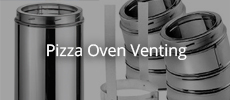Re: foam concrete
Yes, I know you said strength, but if it holds up, it will be use as the insulation layer between the floor bricks/tiles and the stand base,right?
X
-
Re: foam concrete
No, I said strength. I do plan, however to try the foam in conjunction with clay slip and also calcium aluminate cement, can't see why it won't work, but I'll find out.Originally posted by Laurentius View PostHi David,
How do you plan to test it with heat/fire?
Leave a comment:
-
Re: foam concrete
Hi David,
How do you plan to test it with heat/fire?
Leave a comment:
-
Re: foam concrete
I did my first trial with the foam concrete and was more than impressed. I chickened out a little and made a 5:1 vermicrete, but replaced half the vermiculite with foam. Because it contained much less vermiculite I was able to drastically decrease the amount of water required. Following the directions on quantity of concentrate the resulting volume of the mix turned out to be exact. The foam is a little difficult to get to mix into the slurry because it tends to want to float on the top. However, on continued mixing I was able to get a consistent mix. Bubbles of air on the surface tend to break easily but those below the surface remain. The stuff is incredibly light and fluffy, easy to pour and level. I now have a slab that has less vermiculite, therefore less water, and presumably a better insulator as air is superior to vermiculite. Also there will be a reduction in the sponge like characteristic of standard vermicrete to hold water, therefore eliminating the excess water will be less of a problem. Before I jump for joy I will wait to see how it goes for strength. I did add reinforcing fibres to assist this as I usually do. Perhaps next time I'll be brave enough to try using just the foam without the vermiculite.
Leave a comment:
-
Re: foam concrete
David,
Just read your thread on CellCrete, I work for a utility company in the US and we are required to use what we call flowable backfill as compacted materials in pipeline trenches in the city streets (basically low cement based slurry, say one bag mix). We investigated CellCrete as a backfill option but it takes quite a large project for it to be cost effective to bring the equipment in. Cellcrete samples I have show consistent aeration, lightweight, and minimal psi strength (<200 -300 psi) which is good for us since many times we have to go back and dig in the area again. It will be interesting to see how you pioneer project works for an oven. Best of luck.
Leave a comment:
-
Re: foam concrete
Made some improvement today. I fitted a fish tank air disperser and the bubbles are much finer now (see pic). After 30 secs the 20L drum was full of foam, but I kept going for 2 mins. I think I probably could have gone for longer as there was still about 1/4 of the liquid charge left. I used 10 ml concentrate to 1000 ml water which generates 10 L foam. Now to try and add the foam to a cement slurry.I guess it is like adding beaten eggwhites, you just fold it in.1 PhotoLast edited by david s; 10-12-2012, 10:21 PM.
Leave a comment:
-
Re: foam concrete
It sounded amazing, but as you know if it is to good to be true it often is, thanks for the street.have you used the concrete sheets like this at all, I guess they are in Oz ad
d well as nz
Leave a comment:
-
Re: foam concrete
In molecular gastronomy they use lecithin to make a foam ,its still cheap and more stable than detergent.
Leave a comment:
-
Re: foam concrete
Yes, you may be right. I did flatten the end of the pipe so there would be a finer jet. Perhaps one of those aerators that fish tanks use would work too. I shall see how the foamer performs when I get it.
Leave a comment:
-
Re: foam concrete
Dave just looking at your foam generator, I wonder if you can find a sintered frit to put on the end of your air injector pipe. This might help with making smaller bubbles. Take a close look at the small disposable fuel filters they sell for motor bikes, some of them have sintered bronze inserts that you might be able to utilise.
Leave a comment:
-
Re: foam concrete
I would suggest it is probably like every other form of aerated concrete made with aluminium powder - the aluminium reacts with the lime in the concrete, which generates hydrogen, which foams the concrete.Originally posted by waikato pizza View PostHi all - I'm a newbie so hopefully will not be re running old info
I have stumbled across another version of the lightweight concrete. Cellcrete (apologies if this is a brand name only) is a concrete sheet like a giant honeycombe bar of aerated concrete. I have been told that it is made by mixing alumium swarf into the concrete. The whole thing is then heated to a point where the aluminium burns and vaporises leaving gas bubbles behind it. Hence it is already hardened and can be cut using a hand saw.
I will be giving this a try and will let everyone know how I get on - watch for the saga - I aim to eat pizza by christmas!!
Edit - I just goggled cellcrete - its done with a foaming agent water and compressed air, just like Dave is trying to do.Last edited by wotavidone; 10-11-2012, 03:42 AM.
Leave a comment:
-
Re: foam concrete
No, the foam is generated first, then mixed into the cement slurry. I used normal detergent as a test to see if my homemade foam generator worked ok.
Leave a comment:
-
Re: foam concrete
Water and detergent? How is that remotely comparable to fine concrete and detergent?
Try it with fine concrete and detergent, the bubbles may last longer.
Leave a comment:
-
Re: foam concrete
I experimented a bit with foam generation today, using 20 ml dishwashing detergent diluted with 200 ml water and using compressed air to generate the foam. The bubbles produced filled the 20 litre container in a couple of minutes, but the bubbles were very large and after 5 mins the volume of foam had deflated to around a third. Hopefully when the specific product arrives it will work better, but it could also be my method or equipment. The pics tell the story.3 Photos
Leave a comment:
-
Re: foam concrete
Long before the Aluminium vapourizes at 2,327 degrees c the cement would have been totally destroyed in the concrete, and probably all of the sand too.Originally posted by waikato pizza View PostThe whole thing is then heated to a point where the aluminium burns and vaporises leaving gas bubbles behind it.
I think someone is pulling your pud.
Source.
Melting and Boiling Temperatures - Evaporation and Melting Heat
Leave a comment:





Leave a comment: